by Winding Pathways | Mar 2, 2023 | Nature, Travel/Columns
What Do You Need to Know About Winter Travel?
Guest Bloggers, Nancy Sauerman and Bruce Bachmann
I have gone to conferences in the winter but that involves flights, motels, and schedules arranged by someone else. I have had my share of winter travel within the state for short visits or to care for relatives. During our working years, we took our vacations after school semesters ended and before summer class teaching started. After retirement, we still took vacations in the spring or fall — before and after major gardening and food-preserving time and pre/postseason.
Finally, we took a winter travel vacation in January, mainly to visit our sister-in-law, who has Alzheimer’s. We wanted to spend time with her while she still knew us. As longtime campers, we took our basic camping equipment and supplies. After all, we were going south — way south.
What We Learned About Winter Vacations
The days are short. There is less daylight drive time. Driving in the dark in the lethal cold in the middle of nowhere isn’t smart. And so much of the Midwest and Southwest IS the middle of nowhere! Shorter days also mean less time for walking, hiking, and touring. Businesses and museums often have reduced hours. In tourist areas, some restaurants and many campgrounds tend to be closed for the season. Likewise, services such as restrooms and water sources were closed or unavailable (once because of a water pipe break). Roads and trails were blocked. Knowing all this, we didn’t let our gas tank go below half-full. It was too cold to camp.
Where We Did Stay
We stayed at the northern Arkansas farm of our sister and her husband for a couple of nights. While hiking around the farm and learning about their easements to protect the riverbed and banks, old-growth trees, and going through the market gardens, we wore winter coats and wraps. A stiff headwind buffeted us through Oklahoma as we headed to Palo Duro Canyon in the Texas panhandle to camp. Although we have camped down to 30 degrees, with lows predicted to be 24 degrees that night we decided that was pushing it. Also, that state park has the Red River winding back and forth over the road in half a dozen spots. At that temperature, the River would be ice or the roads icy. Dicey! So, we got a motel in Tucumcari, New Mexico. Off-season rates made it more palatable, and it was certainly safer and warmer.
-
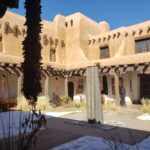
-
With over 300 days of sun, chilis dry easily by braiding them into ristras.
-
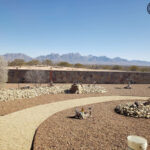
-
Xeriscaping saves precious water
-
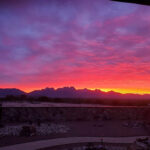
-
The wide horizon reveals brilliant sunrises.
We enjoyed seeing the mountains, including snow-capped ones. Some hikes we took on our way to Las Cruces, NM, included the Valley of Fires lava beds, petroglyphs, and White Sands. All in winter coats. Our brother and his wife hosted us for several days in a comfy setting. Again, we bundled up in winter coats and wraps on our walks, hikes, and trips to the store. Lows at night were in the high teens or low 20s. This was less than an hour from the Mexican border! Winter coats and wraps are cumbersome but better than frostbite. One bonus — no mosquitos, ticks, rattlesnakes, or scorpions! We had only one overcast day and it snowed. So most days we applied sunscreen to our faces; this part of the country has an average of over 325 sunny days per year.
-
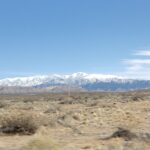
-
Snow-covered peaks
-
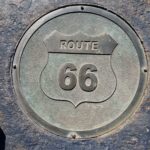
-
Traveling the iconic Route 66.
-
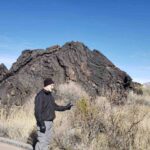
-
Valley of Fires Recreation site in New Mexico
-
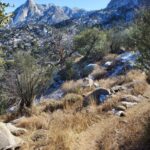
-
Shaped like organs pipes
Wind!
For several days we had high wind warnings. When we finally drove north to Santa Fe, NM, for a few days of culture, history, and adobe architecture, the wind was so strong that we dodged huge tumbleweeds racing across the highway. Whoever was driving would gasp as some, three feet in diameter, even whacked the car. These were not lightweight, stripped-down, bleached tumbleweeds floating across the road. They were full, sturdy balls of Russian thistle whizzing full speed. The wind certainly also cut our gas mileage while we headed west. Our gas mileage was better when we headed back east but the wind wasn’t as strong those days.
Cold Culture
At 7,199 feet above sea level, Santa Fe is the highest elevation state capital. It was cold! One morning we woke to 10 degrees. Needless to say, no camping. The casita where we stayed just a half-mile from downtown had a fully-equipped kitchen, so we were able to cook meals and take breaks between walks to and from the Plaza area with all the museums and historical buildings. Our coats and wraps kept us warm.
-
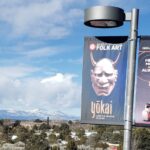
-
Santa Fe boasts intriguing museums.
-
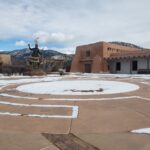
-
Museum of International Folk Art.
-
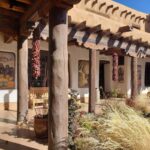
-
Classic architecture.
Keeping an Eye on the Weather
As we readied to head home, weather predictions showed a major winter storm brewing over the Great Plains and ready to plunge into the Upper Midwest. So, winter in America means watching the weather and plotting a safe course of travel, which we did. Staying south and east to avoid serious wind chill warnings, we arrived home a half-hour after the first snow of that storm sifted down. We had expected to have to stay another night in a motel but we slept in our bed that night. Phew!
So, short days, cold, wind, and storms. We will think twice before planning another January Road trip.
by Winding Pathways | Dec 8, 2022 | Garden/Yard, Mammals, Nature, Travel/Columns
Fair Oaks Farm
A couple of times a year we drive to and from New Jersey to visit relatives. It’s a long thousand-mile slog each way, but we recently discovered an amazing driving break……watching a calf being birthed.
Our fastest route is following Interstate 80, but that involves running a traffic gauntlet in northeast Indiana and paying tolls and boredom along the Ohio and Indiana Turnpikes. On a recent trip, we took a more southern route, mostly following secondary roads to avoid tolls and traffic. Never would we have imagined that, on a driving break, we’d watch a birth!
Cow Adventure
Yup. A birth. We’d been following smallish roads across the Hoosier State and had vaguely heard of Fair Oaks Farm. As our car cleared a rise by an enormous farm field we spotted their colorful water tower and stopped in. It’s really not a farm…but then again it is. Mostly it’s a fascinating living museum of American agriculture, focused on dairy, pork, and crops combined with a hotel, restaurant, and gas station.
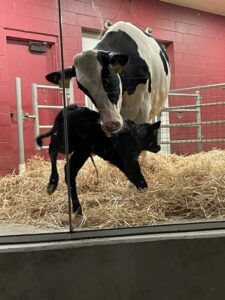
Wobbly legs
After checking in we entered the birthing barn to take in an amazing sight. Two Holstein dairy cows were giving birth, with a human attendant attentively watching to help as needed. As we sat with other families in the darkened seating area, two hooves emerged from each cow. One gave birth quickly. The other struggled until the attending woman helped by gently pulling the calf from her. We, and many others watching, were riveted by the real-time arrival of new living animals. This event brought to mind Marion’s experience growing up on a Maine dairy farm watching a calf being birthed.
From there we enjoyed exhibits telling the story of how crops are grown, dairy cows are cared for, and pork is produced. We walked from building to building enjoying interactive exhibits telling the story of food production. The Farm calls the exhibit areas Crop, Dairy, and Pig Adventures – and they truly are adventurous.
Ninja Warriors in Training
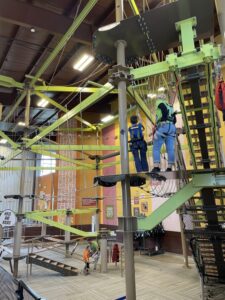
Kids on ropes course
At Pig Adventure we encountered a couple with two small children. “We were on a long drive from Indianapolis to Chicago. The kids were restless in the back seat. So, we stopped. Look at them now,” declared their mom. A young boy and girl were testing their balance on a large complex obstacle course sort of like we see on TV’s American Ninja Warrior. They were harnessed in and guided by employees. Thrills and exercise, yes. Danger, no.
As a seasoned museum professional Rich was impressed at how exhibits were accessible for walking-challenged folks with plenty of places to sit and rest. Yet they gave kids a chance to burn off energy as they moved from exhibit to exhibit. For example, kids could climb small “hills” and slide down the other side to see new displays. One boy operated a hand crank to move large constructed kernels of corn up a vertical elevator to drop into a “silo” and back down for kids to repeat the process. Great learning combined with physical activity. It was, for the family, an educational and exciting way to burn off energy.
Take Time to Experience
We are far from being kids but we gave the crank some turns, also. Then we took a tour break and enjoyed lunch at the site’s eatery, called the Farmhouse Restaurant. As we dined, we watched cheese being made behind a huge glass wall.
We could have boarded a shuttle bus to see actual dairy and pork operations nearby or walk to the orchard and pumpkin patch but time was pressing. We needed to hit the road. So, we will be back.
Visionary Beginnings
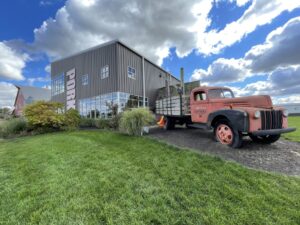
Pig Adventure Starts here!
Fair Oaks Farm was the dream of Mike and Sue McCloskey who began creating it in 1999. It opened a few years later and new exhibits – actually agricultural adventures – are regularly added. Today about 275 staff host thousands of people every year. Jobs for local teens, parents, and grandparents as they warmly welcome visitors.
It’s not all pigs and cows. Many people visit the orchard in the fall to pick apples or the pumpkin patch to stock up on the orange globes for Halloween. Later in the season, there’s ice skating, a forest of lights, and even igloos to enjoy.
The Farm is just off Interstate 94, which links Chicago and Indianapolis. Anyone driving East/West might consider taking smaller roads that parallel Interstate 80 for a less stressful drive that leads past the Farm. For information check out fofarm.com.
by Marion Patterson | Jun 2, 2022 | Chickens, Garden/Yard, Geology/Weather, Hoover's Hatchery, Preparedness, Reflections/Profiles, Travel/Columns
Coming up to a year from the last post on the features we wrote for the Cedar Rapids Gazette, here is an updated list for the second half of 2021 and the first half (almost) of 2022. These features are in addition to our regular work with Hoover’s Hatchery blogs and FB Live and our own blogs for Winding Pathways.
May 8, 2022. Splish Splash! Whitewater Kayaking in Iowa. (No link to date)
April 22, 2022. Finding America On Roadways East.
April 13, 2022. Muscle Over motor When Boating.
March 21, 2022. Rockhounding.
January 30, 2022. Backpacking Bonus. (8B of GZ. No link to date) Available Green Gazette.
January 24, 2022. Distinctive Religious Structures.
January 16, 2022. Hiking Wild Areas. (no link to date) Available Green Gazette.
December, 2021. Country Schools. (no link to date) Available Green Gazette
November 15, 2021. Making a (Mini) Pitch for Soccer.
October 6, 2021. A visit with Midwest’s Pioneering Authors.
September 8, 2021. Taking a Slow Boat to Cassville.
September 6, 2021. Camping in Iowa’s Trout Country & Decorah’s Celebrities.
August 4, 2021. Parking While Headed East. And Solar Panels at Peoples.
by Winding Pathways | Jul 8, 2021 | Travel/Columns
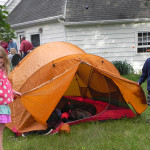
Backyard camping is a good way to start with young children.
Kids love camping. For a youngster a night of camping, even if it’s in the backyard, is an adventure.
This summer the National Wildlife Federation is encouraging people to go camping in national, state, county, or private campgrounds or even in the backyard. They offer a host of information on nwf.
There are lots of ways to camp. We choose to tent but others prefer sleeping in a recreational vehicle or renting a yurt or cabin in the woods for prairie.
Who Camps All Winter?
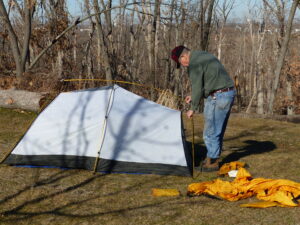
A small tent is cozy
Rich camps out at least once a month all year long, even in winter! When it’s warm the campout is usually in a state park somewhere, but if travel isn’t possible or in winter the little tent gets pitched in the backyard.
Easy Way To Start
Summer backyard camping for kids is easy, fun, and inexpensive. No travel or reservations are needed. An inexpensive big box store tent works OK. We’ve seen them for sale for under $30. They’re not the best in bad weather but they’ll keep bugs and light rain out during a summer yard outing. That’s really all that’s needed. On warm nights kids just need a blanket or sheet, pillow, flashlight, and maybe their favorite stuffed animals or games.
If the weather’s really bad, or winter’s grip is on the land, a kid campout in the living room is also fun. No tent needed. Just drape a big blanket over chairs and make a bed within.
For those who are adventurous like Rich, consider different seasons. Just prepare. Off season camping is great fun.
With so many ways and all seasons to camp, we hope you get outside and play!
-
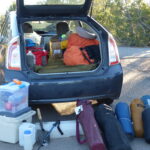
-
Ready to go
-
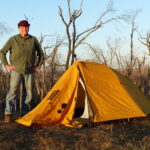
-
Some people like tents.
-
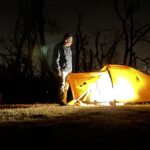
-
A light at night is useful
-
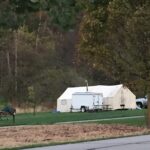
-
For long camping stays a sheepherder tent is just the thing!
-
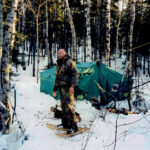
-
These friends really know how to camp year round.
-
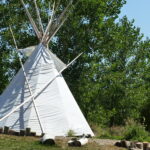
-
We camped outside Yellowstone in a teepee. What fun!
Ready set……go camping!
by Winding Pathways | Jul 1, 2021 | Gazette Features, Hoover's Hatchery, Nature, Travel/Columns
For the past fifteen months Winding Pathways has been busy with writing features for the Cedar Rapids Gazette and blogs for Hoover’s Hatchery and FB Live monthly events. Catch up with our stories in The Cedar Rapids Gazette online.
Hoover’s Hatchery. Click on Flock Journey to read a variety of stories about all things chickens and other poultry. Or News From the Coop blogs.
Here is a list of the more recent features. Just click on the link and read away!
June 13, 2021. Alaska Recreation.
May 22, 2021. Museums of Quad Cities Area. https://www.thegazette.com/recreation/the-many-museums-of-the-quad-cities/
April 18, 2021. Finding Amelia. https://www.thegazette.com/recreation/an-unexpected-search-for-amelia-earhart/
April 11, 2021. Mississippi river Museum and Dubuque
March 25 , 2021 Cedar Falls_Waterloo. Memorable Museums
March 12, 2021. Time Travel. https://www.thegazette.com/subject/sports/outdoors/time-traveling-in-iowa-20210312
March 3, 2021 Entering the Battery Age (column)
February 19, 2021. Franconia Sculpture Park. https://www.thegazette.com/subject/sports/recreation/art-walk-in-a-park-20210219
February 2, 2021. Sprint Cars. https://www.thegazette.com/subject/sports/auto-racing/a-sprint-car-education-20210202
January 14, 2021. Embrace the Outdoors. https://www.thegazette.com/subject/sports/outdoors/embracing-x2014-and-enjoying-x2014-the-cold-outdoors-20210114
*****
December 20, 2020. Walking Cemeteries. https://www.thegazette.com/subject/sports/outdoors/a-peaceful-outdoor-walking-option-20201221
December 14, 2020 Iowa Meat Lockers: https://www.thegazette.com/subject/sports/outdoors/a-meaty-adventure-20201214
Nov 11, 2020 Iowa’s Inland Seas. https://www.thegazette.com/subject/sports/outdoors/enjoying-iowas-inland-seas-20201111
Oct 11, 2020. Barn Quilts. https://www.thegazette.com/article/barn-quilts-offer-brighten-up-the-countryside/
Sept 27, 2020: New Life to dead Trees. https://www.thegazette.com/subject/sports/outdoors/dead-trees-give-life-20200927
September 20, 2020: Walk Outside Safely. https://www.thegazette.com/subject/sports/outdoors/get-outside-and-walk-but-stay-safe-20200920
September 9, 2020: Rebirth Amid the Rubble https://www.thegazette.com/subject/sports/outdoors/a-rebirth-among-the-rubble-of-trees-20200906
August 22, 2020: Iowa’s National Parks. https://www.thegazette.com/subject/sports/outdoors/iowa-national-parks-guide-effigy-hoover-20200822
July 27, 2020: County Parks. https://www.thegazette.com/subject/sports/outdoors/take-advantage-of-iowas-county-gems-20200727
July 11, 2020: Tenting. https://www.thegazette.com/subject/sports/outdoors/why-rv-live-isnt-for-these-senior-tent-campers-20200711
June 26, 2020: Bear Sightings in Iowa: https://www.thegazette.com/subject/sports/outdoors/why-rv-live-isnt-for-these-senior-tent-campers-20200711
April 12, 2020” Walk on Wilder side. https://www.thegazette.com/subject/sports/recreation/take-a-walk-on-the-wilder-side-20200412
by Winding Pathways | Apr 8, 2021 | Reflections/Profiles, Travel/Columns
Just before darkness, cold, and snow appeared last December we decided to try a new winter travel adventure. We purchased a “Great Course” called the Ancient Civilizations of North America that took us on a virtual trek across North America over a 10,000 year plus time.
The course contained 24 lectures on a CD with a paper book paralleling each class.
A Good Way to Enjoy Winter Evenings
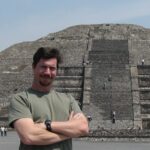
Dr. Barnhart is the director of the Maya Exploration Center.
A few evenings a week we’d sit by our fireplace and enjoy a 30-minute lecture. Our professor was Dr. Edwin Barnhart, Director of the Maya Exploration Center. He’s also a Fellow of the Explorers Club and has traveled extensively. His knowledge of ancient cultures is extraordinary and his delivery impressive. As we watched him on our television it was as if he was speaking directly to us.
His course started with archeological terms and the first people known to cross the Bering Land Bridge and enter our continent in pursuit of mammoths and other gigantic now-extinct animals. Later lectures brought us forward in time to Native Americans along the East Coast just before Europeans arrived.
During the class, we “visited” such fascinating places as Chaco Canyon, Cahokia, Meadowcroft Rockshelter, and many others.
A Chat with Dr. Barnhart
Shortly after finishing his course, we had a delightful phone conversation with Dr. Barnhart. He lives in Austin, Texas, and was attempting to replace a water line that froze and bust in the late winter freeze that hit the Lone Star State and other southern states. Curious, we asked him a number of questions about archeology and how the Great Course we took was so effectively presented. Here were some of our questions and his responses:
- Do archeologists often have a feeling of awe when at a place where people lived hundreds or thousands of years ago? “Yes, very often.”
- We live in Iowa where ancient people often created large earthen mounds, often on high ridges above streams and rivers. Might we have mounds near our home above Indian Creek and how might we spot them? “The name Indian Creek sums it up. Yes. There might be mounds, but many may have been destroyed. Keep your eyes open. It’s important that these places be protected.
- When we mentioned that the area had been hit but a derecho’s 140 miles an hour wind that had uprooted many trees he responded, “Often artifacts are found in the root balls of uprooted trees. Look carefully at them and you might find stone tools or pieces of pottery.”
Keeping the Conversation Lively
- When we asked him about how he made his course delivery so interesting he replied, “We’ll I organized the class and its content but the technical people who did the filming for the Great Course are skilled in helping make and keep presentations interesting.” Among the aspects of the class and delivery that kept us fascinated were background murals that changed with each lecture, excellent graphics and maps, and Dr. Barnhart looking directly at us (the camera). He would also rotate about 90 degrees every ten or fifteen minutes and look at a different camera. Then he revealed a secret. Because he knew the material well and had written the script keeping a flow of conversation was easy. And, he quipped, “My notes were on a teleprompter.”
We thank Dr. Barnhart for his vast knowledge and ability to communicate it. We will take future Great Courses. They range from lifestyle topics to learning advanced calculus to European history and music. For information go to www.thegreatcourses.com.
Author note: We purchased and reviewed the Great Course on our own with no special consideration given to us.






















